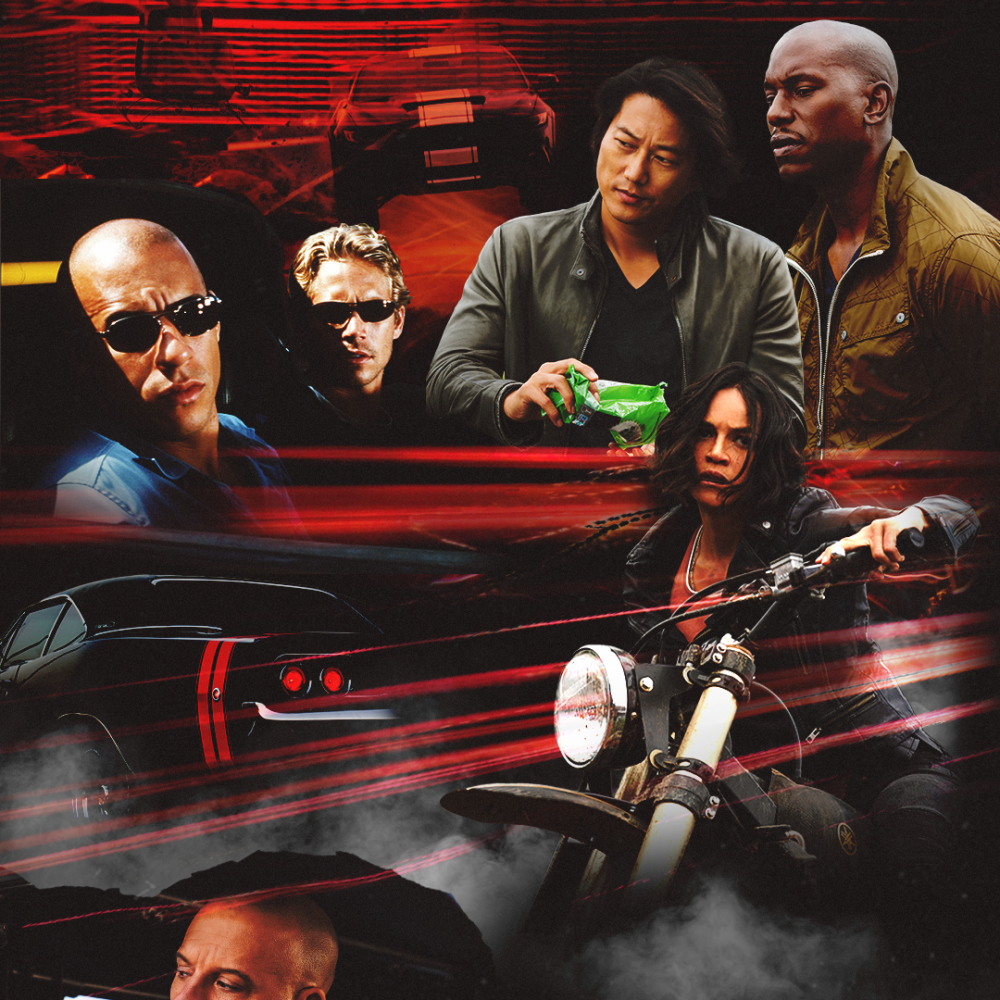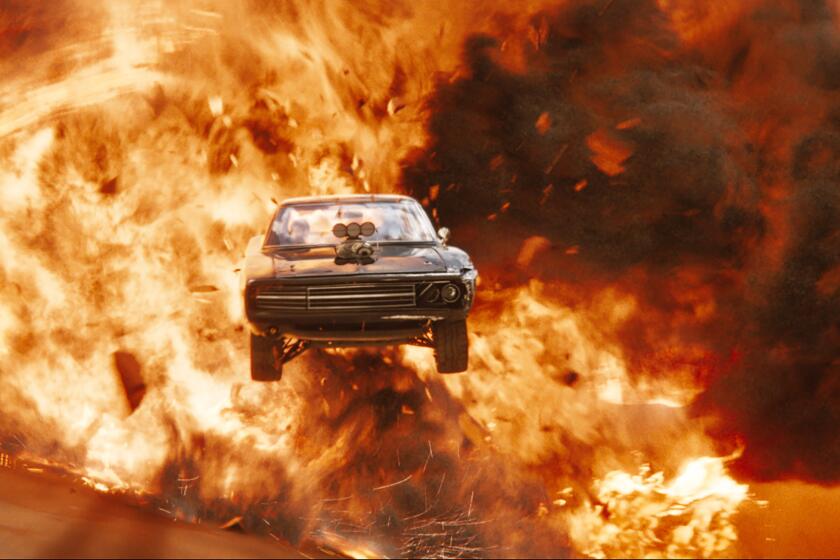
- Share via
I am not a car person. I’m someone who could easily be swindled by a mechanic or car salesman. I don’t even like to drive. Yet I’m convinced that the “Fast & Furious” franchise is a film series that, despite being commercially successful, is underappreciated for representing the Black, Latinx and Asian communities that have made the franchise so special.
Throughout my life, the “Fast & Furious” franchise has existed only in the recess of my mind. I was 2 years old when the first film came out in theaters, but even when I got older, I noticed each subsequent release at the box office with nothing more than disinterest.
But as it reached its 10th-film milestone this last summer, I decided there was no better time to embark on binging the entire franchise at once. By the time the end credits of “Fast X” rolled, I realized that my younger self couldn’t have been more wrong.
On the surface, there’s a lot to critique about this series — the crazy car stunts that defy the laws of physics, the predictable writing, the soap opera-level plots and the retconned deaths. I found myself rolling my eyes at every inexplicable plot twist, like when Han was revealed to be alive in “F9” or when Letty conveniently lost her memory in “Fast & Furious 6.”
Latinx audiences, key to the success of “Fast and Furious,” are Hollywood’s most dependable customers. Now they’re helping movie theaters bounce back after COVID-19. Will they be rewarded?
Not to mention the number of times a woman’s half-dressed body was plastered across the screen before each street race for no reason other than to please its male-majority audience. It’s easy to dismiss it as a train wreck and only see it for its flaws.
Yet I’d argue that this franchise offers something much deeper and compelling than audiences might be aware of — starting with the broad ethnic and racial diversity in front of and behind the camera.
At a time when modern moviegoers are demanding more diversity and inclusion in film, it surprised me to see a decades-long franchise with a majority Black, Latinx and Asian cast and majority Black and Asian directors.
Additionally, Afro-Latines, who have long been erased within the Latinx community and mainstream media, have been centered in the cast from the beginning of the franchise, arguably making it ahead of its time. So why are we accepting the bare minimum today when “F&F” has been doing it since 2001?
‘Fast & Furious’ taps into Latino market
The franchise has never given us a whitewashed version of Los Angeles. This is in large part because of the series’ focus on street racing, which is used as a storytelling device to showcase the sights of L.A. you don’t see in tourist guides — from San Bernardino International Airport to the Terminal Island Freeway.
It’s no coincidence that Vin Diesel’s character, Dom Toretto, lives in a working-class neighborhood that is bordered by Echo Park, Dodger Stadium, Filipinotown, Chinatown and Little Tokyo. Interestingly enough, Dom was coded as Italian American before being revealed as Cuban in “Fast 8.”
L.A. is the group’s home base, the place they return to when the job is done, and the films make it clear that the BIPOC folks who live and work there are worth celebrating.
The same is true no matter how international they go, especially in Latin America. Unlike other movies that see the region as a sepia-toned wasteland, places like the Dominican Republic and Brazil aren’t just hotbeds of crime and gang activity.
After a high-profile exit shook up one of Hollywood’s biggest franchises, Louis Leterrier received a late-night phone call that changed his life.
Audiences are meant to see these locations in full color, to appreciate their beauty, vibrancy and complication.
Thanks to the choices the group makes throughout every film, largely illegal and criminal, these stories are in many ways anti-authority, anti-police, anti-military and anti-corruption.
The music choices in these sequences are intentional as well, with soundtracks that speak directly to Black, Latinx and Asian cultures both in the U.S. and abroad. Throughout the years, the films have featured songs from artists like Ja Rule, Tank, Ludacris (who also stars in the main cast), N.E.R.D., Molotov, Pitbull, Don Omar, Dragon Ash, MC Jin and other artists who speak to the community and cultures that the films represent.
As I was watching, there were many songs I recognized or heard playing at family parties, which made the movie-watching experience even more appealing. I might not be able to relate to the characters’ problems, but we definitely have the same playlists.
Resident ‘Fast & Furious’ expert Jen Yamato explains how ‘Fast X’ fits into the franchise’s complicated lore — and what it means for the saga’s end.
Frankly, as much as I love Paul Walker, it doesn’t matter that the first seven movies center on a white male protagonist because his presence was secondary to the overwhelming love the filmmakers had for our communities.
I loved the way they primed these stories to appeal to us like the telenovela-style storytelling, cookouts where characters eat Latinx dishes and drink Corona, and family values.
In every aspect of this franchise, there’s no question about it — these films were made for communities that are intersected by the city of L.A. And I am a newfound fan.
Sofía Aguilar is a Chicana writer based in Los Angeles. Her work has appeared in the L.A. Times, Refinery29 Somos and New Orleans Review, among other publications. @sofiaxaguilar
More to Read
The Latinx experience chronicled
Get the Latinx Files newsletter for stories that capture the multitudes within our communities.
You may occasionally receive promotional content from the Los Angeles Times.









